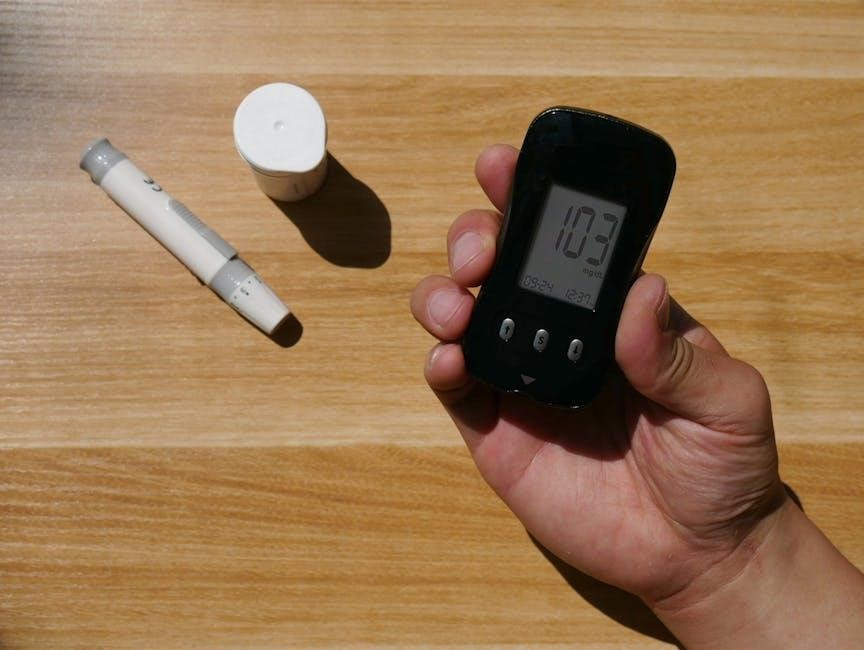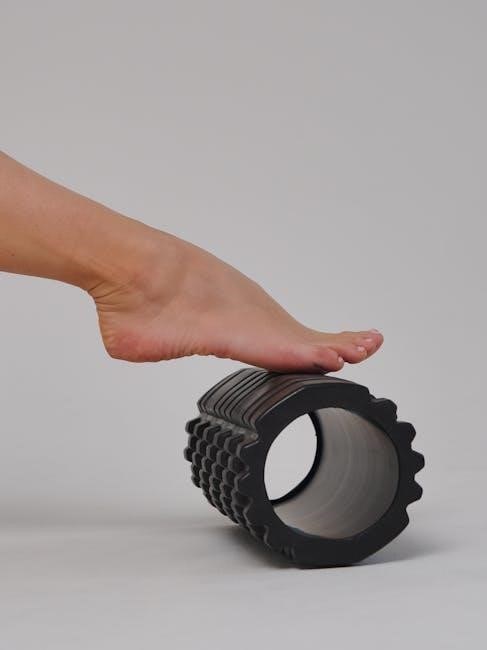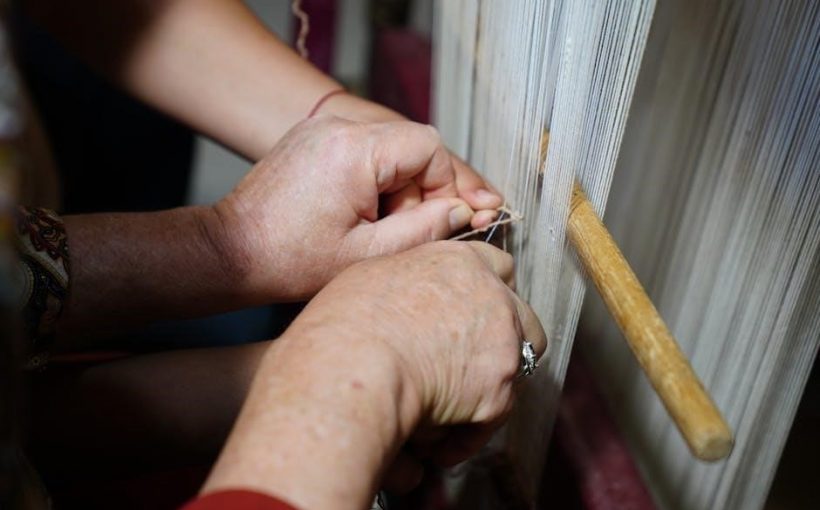This manual serves as your gateway to mastering the Presto Pressure Canner and Cooker, ensuring safe and efficient canning and cooking experiences through detailed guidelines and troubleshooting tips.
Overview of the Presto Pressure Canner and Cooker
The Presto Pressure Canner and Cooker is a versatile kitchen appliance designed for both pressure canning and pressure cooking. It is a durable, stainless steel device built for safety and efficiency. This multi-use cooker allows users to preserve food through canning and prepare a variety of meals quickly. Its key features include a pressure regulator, locking lid, and easy-to-use design. Perfect for home cooks and canning enthusiasts, it ensures safe and efficient food preservation while also offering the convenience of pressure cooking.
Importance of Following the Manual
Following the Presto Pressure Canner and Cooker manual is essential for safe and effective use. The manual provides critical safety guidelines, operating instructions, and maintenance tips to ensure proper function. Neglecting the manual can lead to accidents, improper food sterilization, or equipment damage. Adhering to the instructions guarantees optimal performance, reduces risks, and helps preserve food safely. Regular maintenance, as outlined, extends the appliance’s lifespan and reliability. Always refer to the manual for specific procedures and troubleshooting to achieve the best results and maintain safety standards.
Key Features of the Presto Pressure Canner and Cooker
The Presto Pressure Canner and Cooker is designed with heavy-gauge steel for durability and even heat distribution. It features a precision pressure regulator for accurate control, ensuring safe and efficient cooking. The locking lid provides a secure seal, while the multiple pressure settings allow for versatility in cooking various foods. Additional features include a safety lock to prevent accidental opening and an overpressure plug for added protection. Its user-friendly design and included accessories like a steam basket make it ideal for both novices and experienced users.

Understanding the Components of the Presto Pressure Canner
The Presto Pressure Canner includes essential parts like the lid, gasket, pressure regulator, and safety valves, designed to ensure safe and efficient pressure canning and cooking.
Main Parts of the Presto Pressure Canner
The Presto Pressure Canner features a heavy-duty pot with a sturdy lid, ensuring even heat distribution and secure sealing. The gasket provides an airtight seal, while the pressure regulator controls steam release. Additional components include safety valves for emergency pressure release, a locking mechanism to secure the lid, and a vent pipe for steam venting. These parts work together to ensure safe and efficient pressure canning and cooking. Proper maintenance of these components is crucial for optimal performance and longevity.
Functions of the Pressure Regulator
The pressure regulator on the Presto Pressure Canner is designed to maintain precise control over internal pressure during cooking. It features selectable settings, typically 5, 10, and 15 PSI, allowing users to adjust based on specific recipes or canning requirements. The regulator ensures consistent pressure by releasing excess steam, preventing over-pressurization. This critical component guarantees safe and efficient cooking while maintaining even heat distribution. Proper use of the pressure regulator is essential for achieving desired results and preventing potential safety hazards. Always refer to the manual for guidance on regulator settings.
Role of the Gasket and Seals
The gasket and seals in the Presto Pressure Canner are essential for creating a tight, airtight seal during operation. The gasket, typically made of durable rubber or silicone, ensures that steam cannot escape, allowing pressure to build evenly. Seals reinforce this by preventing leaks at critical points. Over time, these components may wear out, requiring periodic inspection and replacement to maintain proper function. A failed gasket or seal can lead to incomplete pressurization, so regular checks are crucial for safe and effective pressure canning. Always refer to the manual for guidance on inspections and care.

Safety Guidelines and Precautions
Always follow the Presto manual for safe pressure canning. Regularly inspect the cooker for damage. Never overfill jars or leave the cooker unattended during operation.
General Safety Tips for Pressure Canning
Always follow the Presto manual for safe pressure canning. Regularly inspect the cooker for damage. Never overfill jars or leave the cooker unattended during operation. Ensure proper venting to avoid blockages. Use the correct sealing techniques to prevent leaks. Keep children away while operating. Avoid opening the cooker until pressure is fully released. Always use oven mitts or tongs when handling hot jars. Maintain a clean workspace to prevent accidents. Follow USDA guidelines for safe canning practices. Regularly check and replace worn-out gaskets or seals. Never submerge the cooker in water for cleaning. Store the cooker in a dry, secure location when not in use.
Understanding Pressure Indicators and Safety Valves
The Presto Pressure Canner features a pressure indicator and safety valve to ensure safe operation. The pressure indicator shows when the cooker reaches the desired pressure level (5, 10, or 15 PSI). The safety valve automatically releases excess steam if pressure exceeds safe limits. Always monitor the indicator during cooking and ensure the valve is clean and unobstructed. These components prevent over-pressurization and potential hazards. Regular inspection and maintenance of these parts are crucial for reliable performance and safety.
Important Warnings from the Manual
Always follow the manual to avoid accidents. Overheating can occur if the cooker is left unattended. Never leave the Presto Pressure Canner unattended during operation. Ensure all handles and knobs are cool before handling. Avoid using abrasive cleaners, as they may damage the finish. Never operate the cooker without the gasket, as this can lead to failure. Do not tighten the lid excessively, as this may damage the sealing mechanism. Always allow the cooker to cool naturally before opening. Regular maintenance is essential for safe and efficient operation.

Preparing for First-Time Use
Before first use, inspect all parts for damage. Read the manual thoroughly. Ensure the gasket is properly seated and the regulator is clean. Follow initial setup guide.
Unpacking and Initial Inspection
Begin by carefully unpacking the Presto Pressure Canner, ensuring all components are included; Inspect for visible damage, dents, or wear. Check the gasket, regulator, and seals for integrity. Verify the lid aligns properly with the pot. Examine the pressure gauge and safety valves for cleanliness and functionality. If any part is damaged or missing, contact customer support immediately. Familiarize yourself with each component’s purpose before proceeding to cleaning and setup. A thorough inspection ensures safe and effective operation of your pressure canner.
Cleaning and Maintenance Before First Use
Before using your Presto Pressure Canner, wash all parts with warm, soapy water. Rinse thoroughly and dry with a clean towel. Pay special attention to the gasket and seals, ensuring they are free of debris. Inspect for any residue or defects. Avoid using abrasive cleaners or scouring pads, as they may damage surfaces. After cleaning, rinse and dry all components to prevent water spots. This step ensures optimal performance and longevity of your pressure canner. Proper maintenance begins with a clean, well-prepared unit.
Understanding the Venting Process
Venting is a critical step before pressurizing the cooker. Open the vent to allow steam to escape freely for 10 minutes. This ensures all air is removed, creating a pure steam environment for even heating. Proper venting prevents inaccurate pressure readings and promotes safe, consistent cooking. Failure to vent can lead to incomplete sealing or uneven cooking. Always follow the manual’s venting instructions to ensure optimal performance and safety when using your Presto Pressure Canner and Cooker for canning or cooking.

Operating the Presto Pressure Canner
Place the rack, add water, and arrange jars. Secure the lid, ensuring it locks tightly. Regulate heat to achieve desired pressure, then maintain it steadily during processing. After processing, allow pressure to drop naturally for safe jar removal.
Step-by-Step Guide to Pressure Canning
Preheat the Presto Pressure Canner by adding 2-3 inches of water and bringing it to a simmer.
Place jars on the rack, ensuring they are not overcrowded.
Secure the lid, aligning the gasket and ensuring a tight seal.
Turn the regulator to “seal” and monitor until it reaches the desired pressure.
Process for the recommended time, adjusting for altitude if needed.
Allow pressure to release naturally for 10-15 minutes, then quick-release.
Remove jars with a lifter and let them cool undisturbed for 12-24 hours.
Check seals by pressing the top; if sealed, store in a cool, dark place.
- Always follow tested recipes and guidelines for safe canning.
Setting Up the Canner for Cooking
To set up your Presto Pressure Canner for cooking, start by placing it on a heat-resistant surface. Ensure the bottom rack is in position to elevate jars and promote even heat distribution. Inspect the gasket and seals for proper alignment and condition. Add the recommended amount of water or cooking liquid, typically 2-3 inches deep. Place filled jars on the rack, leaving space between them to avoid overcrowding. Close the lid securely, aligning it with the lock handles. Finally, attach the pressure regulator and proceed to heat the canner. Always follow manual guidelines for safe operation.
Monitoring Pressure During Operation
Monitoring pressure during operation is crucial for safe and effective canning. Always use the pressure gauge to ensure the pressure remains within the recommended range specified in the manual. Adjust the heat source as needed to maintain consistent pressure. If the pressure drops too low, the food may not be properly sterilized. Conversely, excessive pressure can lead to safety hazards. Keep an eye on the regulator and ensure it’s functioning correctly. Proper pressure monitoring ensures even cooking and prevents potential risks.

Pressure Canning Guidelines
Always ensure proper sterilization and acidity levels for safe canning. Use tested recipes and follow USDA guidelines for processing times and pressures to prevent spoilage and foodborne illness.
- Acidity Levels: Add lemon juice or vinegar to low-acid foods to ensure safety and prevent botulism.
- USDA Guidelines: Refer to the USDA Complete Guide to Home Canning for validated recipes and processing times.
- Jar Preparation: Leave recommended headspace, ensure seals are clean, and lids are tightened properly before processing.
Processing Low-Acid Foods Safely
Processing low-acid foods requires careful attention to ensure safety and prevent spoilage. Low-acid foods, such as meats and vegetables, must be pressure canned to reach temperatures high enough to kill harmful bacteria like Clostridium botulinum. Always follow tested canning guidelines, as improper processing can lead to unsafe conditions. Ensure the acidity level of foods is adequate or add approved acids like lemon juice or vinegar. Never rely solely on natural acidity for low-acid foods. Always use a pressure canner for these items to achieve the necessary 240°F (115°C) internal temperature.
Understanding the USDA Guidelines for Canning
The USDA guidelines for canning are essential for ensuring safe and effective food preservation. These guidelines provide standardized procedures for processing times, temperatures, and methods to eliminate harmful bacteria and prevent spoilage. For low-acid foods, pressure canning is required to reach the necessary 240°F internal temperature. The USDA recommends specific jar sizes, headspace measurements, and sealing techniques to maintain vacuum integrity. Always consult the USDA’s Complete Guide to Home Canning for detailed charts and instructions tailored to your Presto Pressure Canner and Cooker Manual.
Best Practices for Loading Jars
- Always leave the recommended headspace, typically 1 inch, to ensure proper sealing and vacuum formation.
- Use clean, hot jars and lids to prevent contamination and promote a tight seal.
- Place jars on the rack, avoiding direct contact with the canner walls or each other for even heat distribution.
- Do not overload the canner; follow the manual’s jar capacity guidelines to ensure safe operation.
- Keep liquid levels consistent to maintain proper pressure and prevent siphoning during processing.
Improper jar loading can lead to seal failures or uneven cooking, so adherence to these practices is crucial for safe and successful canning.

Cooking with the Presto Pressure Canner
Cooking with the Presto Pressure Canner offers versatility, allowing for pressure cooking, canning, and simmering. It distributes heat evenly, ensuring consistent results. Its quick cooking times preserve nutrients while tenderizing foods. Perfect for meats, grains, and legumes, it enhances flavors and textures. Always follow guidelines for safe canning practices to achieve optimal results.
Cooking Times and Liquid Ratios
Cooking times and liquid ratios are critical for safe and effective pressure canning. Always consult the Presto manual for specific guidelines, as times vary by food type and size. Generally, most recipes require a minimum of 1 cup of liquid to maintain pressure and prevent scorching. For low-acid foods, follow USDA-recommended processing times to ensure safety. Adjust cooking times for altitude if necessary, as higher elevations may require longer processing. Proper liquid ratios help achieve consistent results and prevent overcooking or undercooking.
When adapting recipes, ensure liquid levels align with the Presto Pressure Canner’s specifications. Too little liquid can lead to insufficient steam, while excessive liquid may affect texture. Always align the pressure regulator correctly to maintain accurate cooking times. Refer to the manual for detailed charts and guidelines tailored to your specific needs.
Remember, precise measurements and timing are essential for achieving the best results while ensuring food safety. Happy canning!
Adapting Recipes for Pressure Cooking
When adapting recipes for the Presto Pressure Canner, reduce cooking times by up to 70% compared to traditional methods. Liquids should be minimized, as steam generates pressure. Use at least 1-2 cups of liquid, but avoid overfilling. Seasonings can be added directly, but salt may intensify flavors, so adjust to taste. Brown meat or vegetables before pressure cooking for enhanced flavor. For grains, use a 1:1 liquid-to-grain ratio. Always consult the USDA guidelines for safe canning practices, especially for low-acid foods. Experiment with spices and herbs to optimize flavor in your pressure-cooked meals.
Cooking Meat, Fish, and Seafood
Cooking meat, fish, and seafood in the Presto Pressure Canner requires careful attention to ensure safety and flavor. For meats, use lean cuts for best results, and cook at 10-15 PSI for 30-60 minutes. Fish and seafood, like salmon or shrimp, cook quickly—5-10 minutes at 10 PSI. Always follow USDA guidelines for processing times to ensure food safety. Remove bones and excess fat before packing to prevent spoilage. Pressure cooking preserves moisture and flavor, making it ideal for tenderizing tougher meats and achieving perfectly cooked fish and seafood every time.

Troubleshooting Common Issues
Identify and resolve issues with your Presto Pressure Canner effortlessly. Common problems include leaks, poor sealing, or pressure regulation failures. Regular maintenance and parts inspection are essential for optimal performance.
- Check for worn-out gaskets or seals and replace them promptly.
- Ensure the lid is aligned correctly before locking.
- Monitor pressure gauges for accurate readings during operation.
Always refer to the manual for specific troubleshooting steps to avoid further complications and ensure safety while operating your Presto Pressure Canner and Cooker.
Common Problems and Solutions
One common issue is the lid not sealing properly, which can be resolved by ensuring the gasket is clean and properly aligned. If the pressure regulator isn’t functioning, check for blockages or damage. Excessive noise during operation may indicate a clogged vent pipe, which should be cleaned immediately. If the canner isn’t building pressure, verify that the lid is securely locked and the vent is clear. Always refer to the manual for specific troubleshooting steps to ensure safe and effective operation.
Dealing with Leaks or Poor Sealing
If you notice leaks or poor sealing during operation, stop the canner immediately and allow it to cool. Inspect the gasket for damage, misplacement, or dirt buildup. Ensure the lid is properly aligned and closed securely. Clean the lid and gasket with mild soap and water, then dry thoroughly. If issues persist, check for worn-out seals and replace them as needed. Always refer to the manual for guidance on diagnosing and resolving sealing problems to ensure safe and efficient operation.
Pressure Regulation Troubleshooting
If the Presto Pressure Canner isn’t maintaining proper pressure, check for blockages in the vent pipe or regulator. Ensure the regulator is clean and free of food particles. If pressure is too high, reduce heat slightly. For low pressure, increase heat gradually. If issues persist, inspect the gasket for proper alignment. A faulty pressure regulator may need replacement. Always refer to the manual for specific guidance. If problems continue, contact customer support for assistance.

Maintenance and Storage
Regular maintenance ensures optimal performance. Wash the Presto Pressure Canner with mild soap, avoiding abrasive cleaners. Dry thoroughly after cleaning to prevent rust. Store in a dry, cool place away from direct sunlight and moisture. Always keep the gasket and seals submerged in water when not in use to maintain flexibility. Reassemble the canner before storing to ensure all parts remain aligned and functional.
Cleaning the Canner After Use
After each use, allow the Presto Pressure Canner to cool completely before cleaning. Wash the canner, lid, and gasket with mild soap and warm water. Use a soft sponge or brush to remove food residue. Avoid abrasive cleaners or scourers, as they may damage the finish. Rinse thoroughly and dry with a clean towel to prevent rust. Regular cleaning ensures optimal performance and extends the lifespan of your Presto Pressure Canner. Always refer to the manual for specific cleaning instructions.
Replacing Seals and Gaskets
To ensure optimal performance and safety, inspect the gasket and seals regularly. Replace them if you notice cracks, wear, or damage. Use genuine Presto replacement parts for compatibility. To replace, turn the lid upside down, remove the old gasket, and insert the new one into the groove. For the seal, locate the pressure regulator and twist to remove the old seal, then install the new one. After replacement, test the lid by closing it and checking for a tight seal. Properly maintained seals prevent leaks and ensure safe pressure canning;
Proper Storage to Maintain Performance
Proper storage is essential to maintain the performance of your Presto Pressure Canner. After cleaning, store the canner in a dry, cool place away from direct sunlight.
Ensure all parts, including the gasket and seals, are completely dry to prevent mold or mildew.
Avoid storing the canner in attics or basements, as extreme temperatures can affect its functionality.
Keep the lid slightly ajar to allow air circulation and prevent moisture buildup;
Store the gasket and seals separately in an airtight container to maintain their shape and elasticity.
Regularly inspect stored parts for signs of wear or damage before reuse.

Additional Resources and Support
For the Presto Pressure Canner, download the manual from their official website. Explore customer support options like phone or email for assistance. Check recommended accessories like jar lifters and canning racks to enhance your experience.
Downloading the Presto Manual Online
To access the Presto Pressure Canner and Cooker manual online, visit the official Presto website or authorized retailers like Amazon. Search for your specific model to ensure compatibility. Download the PDF version for easy reference on your device. If the manual isn’t available online, contact Presto customer support for assistance. Having a digital copy allows you to access it anytime, even without the physical manual. This ensures you can always refer to safety guidelines, operating instructions, and troubleshooting tips.
Save the manual to your device or cloud storage for quick access. This digital version is environmentally friendly and reduces clutter. Regularly check for updates to ensure you have the latest information and safety protocols. A downloaded manual is a convenient resource for mastering your Presto Pressure Canner and Cooker.
Customer Support and Warranty Information
Presto offers comprehensive customer support to ensure optimal use of your pressure canner. For inquiries, contact their support team via phone, email, or through the official website. The Presto Pressure Canner is backed by a limited one-year warranty, covering defects in materials and workmanship. Visit the Presto website for detailed warranty terms, FAQs, and downloadable resources. Additionally, live chat support is available on their website during business hours for immediate assistance.
Recommended Accessories for the Presto Pressure Canner
To enhance your pressure canning experience, consider investing in recommended accessories. A pressure canner regulator ensures precise control over pressure levels. Jar lifters make handling hot jars safer and easier. Canning salt is essential for preserving flavors and textures. A stainless steel rack helps prevent jars from cracking. An acid tester is crucial for verifying safe acidity levels in low-acid foods. Additionally, sealing rings and replacement lids are handy for maintaining a tight seal. These accessories ensure safe, efficient, and successful canning sessions.
The Presto Pressure Canner and Cooker manual provides comprehensive guidance for safe, efficient, and delicious meal preparation. By following its instructions, you can master pressure canning and cooking, ensuring optimal results every time while exploring a variety of recipes and techniques for years to come.
Final Tips for Getting the Most Out of Your Presto Pressure Canner
To maximize your Presto Pressure Canner’s performance, always experiment with new recipes while adhering to safety guidelines. Regularly inspect and replace worn-out gaskets and seals to ensure proper sealing. Keep the pressure regulator clean to maintain accurate pressure control. For consistent results, use the recommended liquid ratios and processing times. Explore diverse cooking techniques, such as canning, cooking, and steaming, to broaden your culinary skills. Refer to the manual periodically for refreshers on best practices. Happy cooking and canning with your Presto!
Encouragement to Explore More Recipes and Techniques
With the Presto Pressure Canner and Cooker, the possibilities for creative cooking are endless. Experiment with new recipes, from hearty stews to flavorful grains, to discover the versatility of pressure cooking. Try adapting traditional family dishes or exploring international cuisines for a fresh twist. Don’t hesitate to innovate and share your creations with others. Remember, practice makes perfect, so keep exploring and refining your techniques. The Presto Pressure Canner is not just a kitchen tool—it’s a gateway to culinary creativity and delicious meals for years to come!
